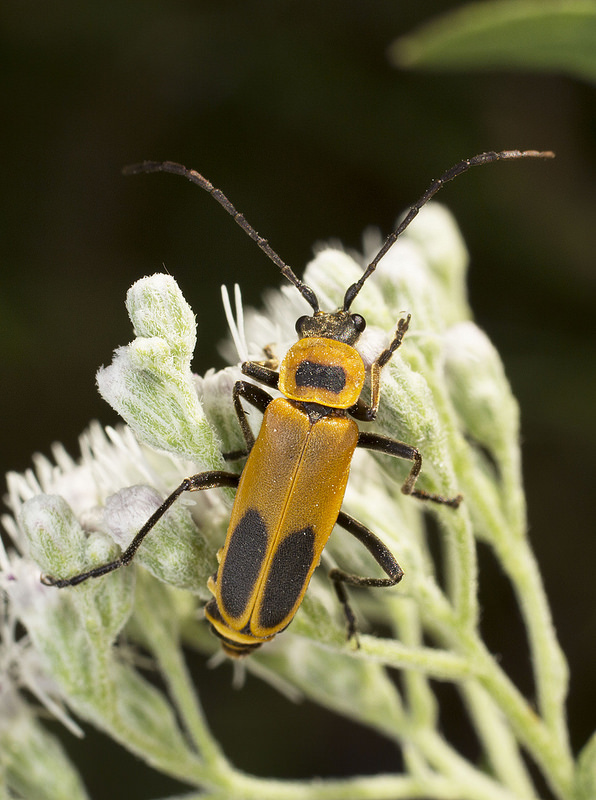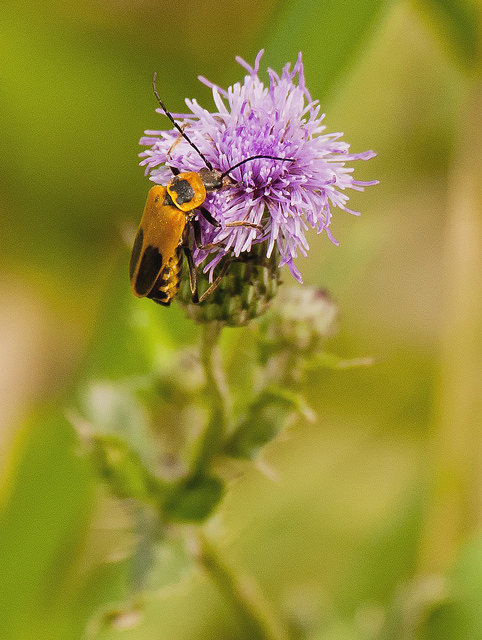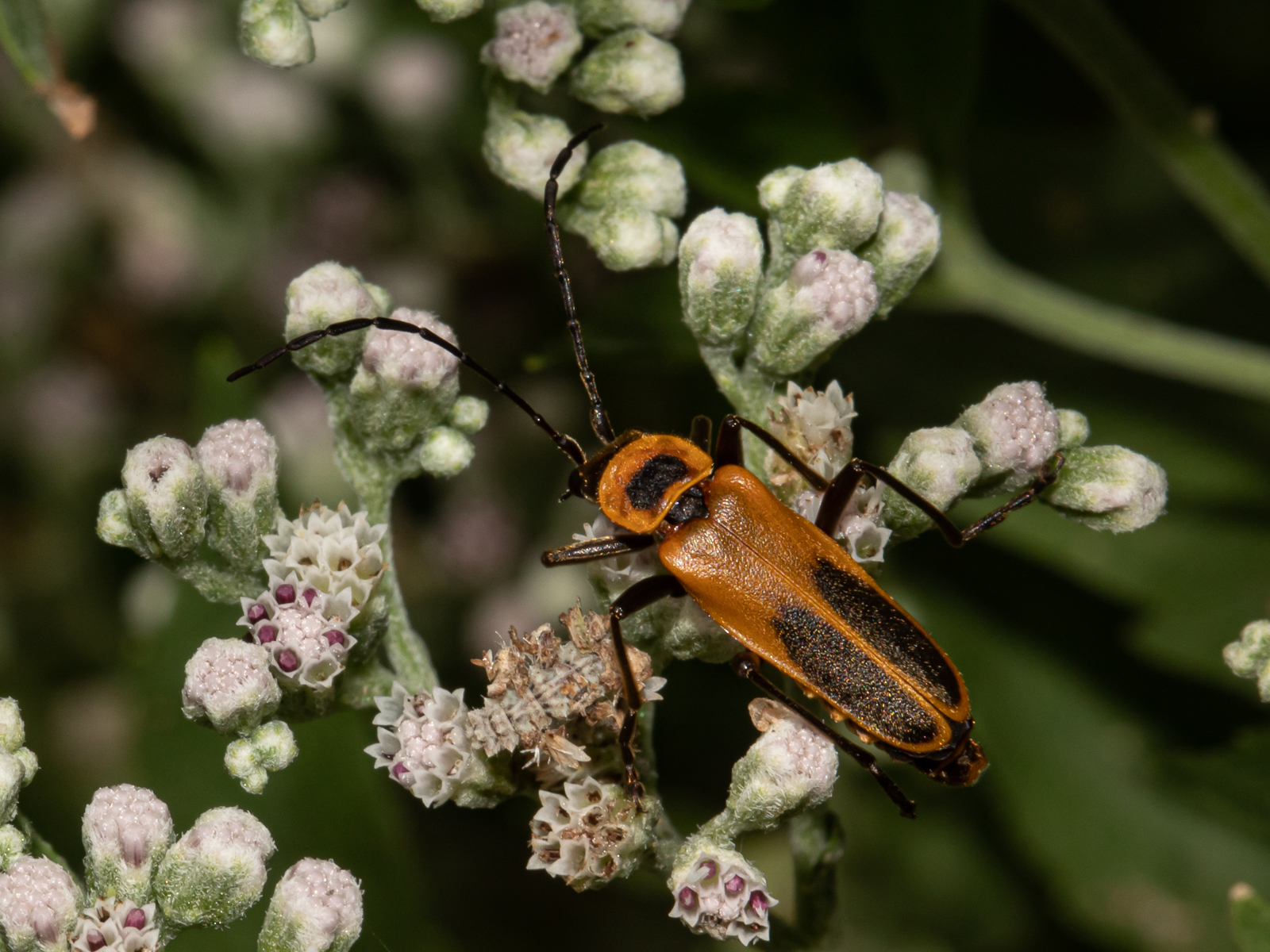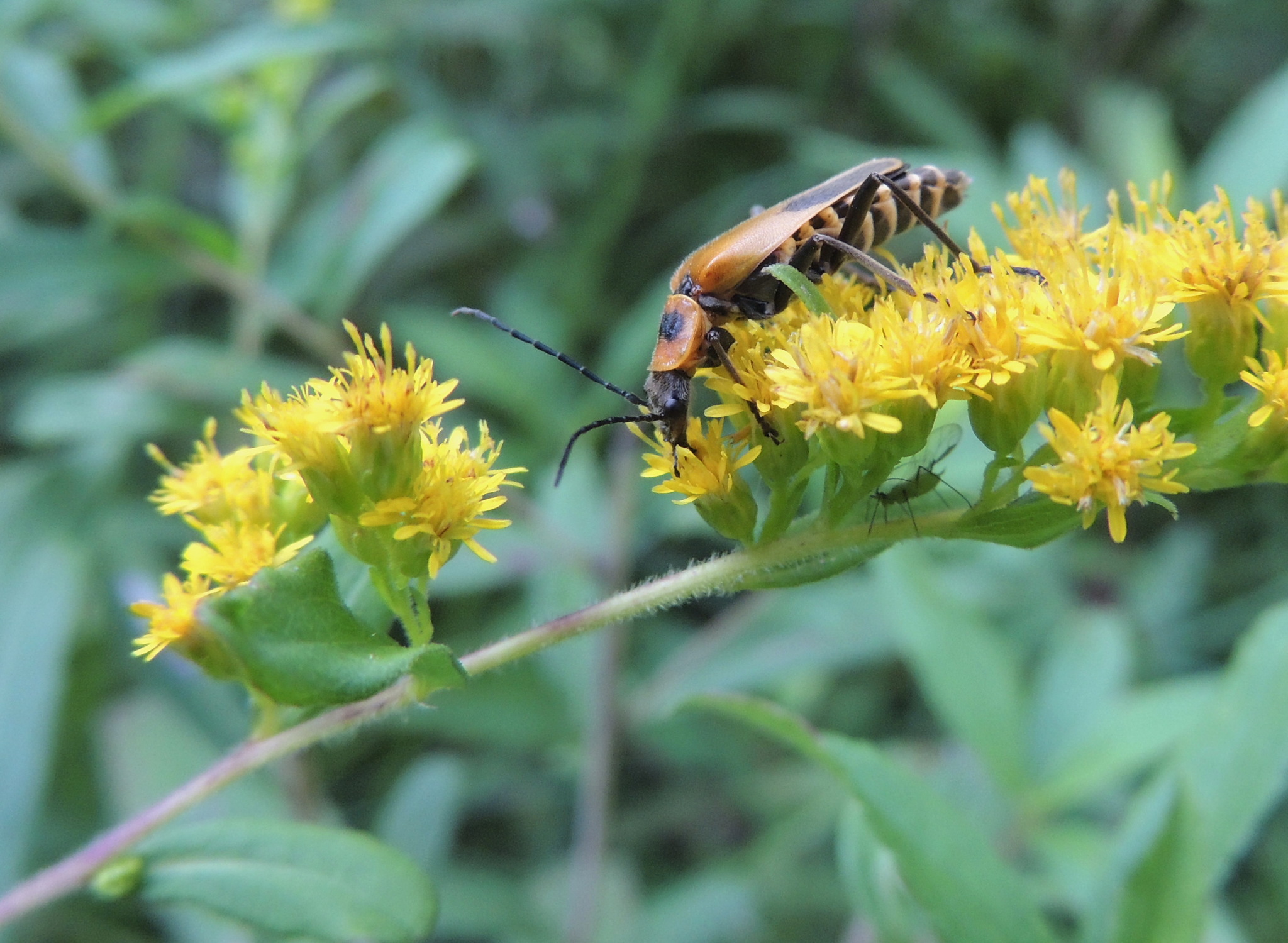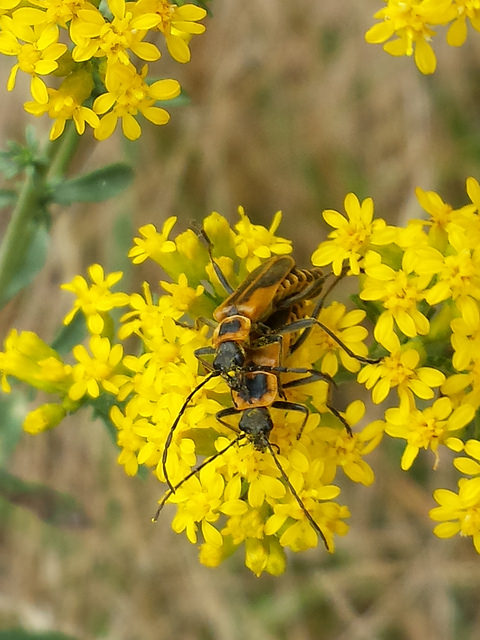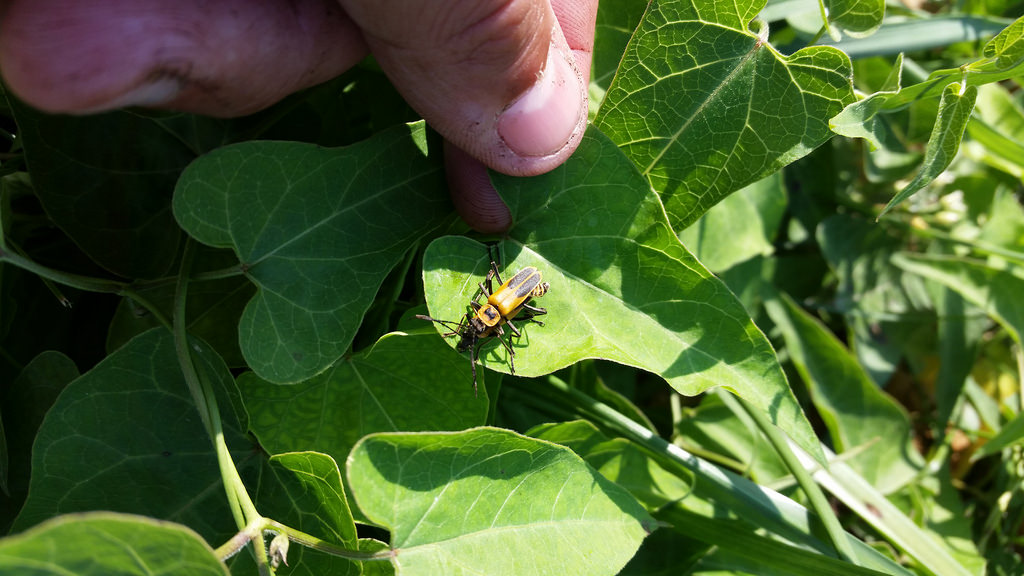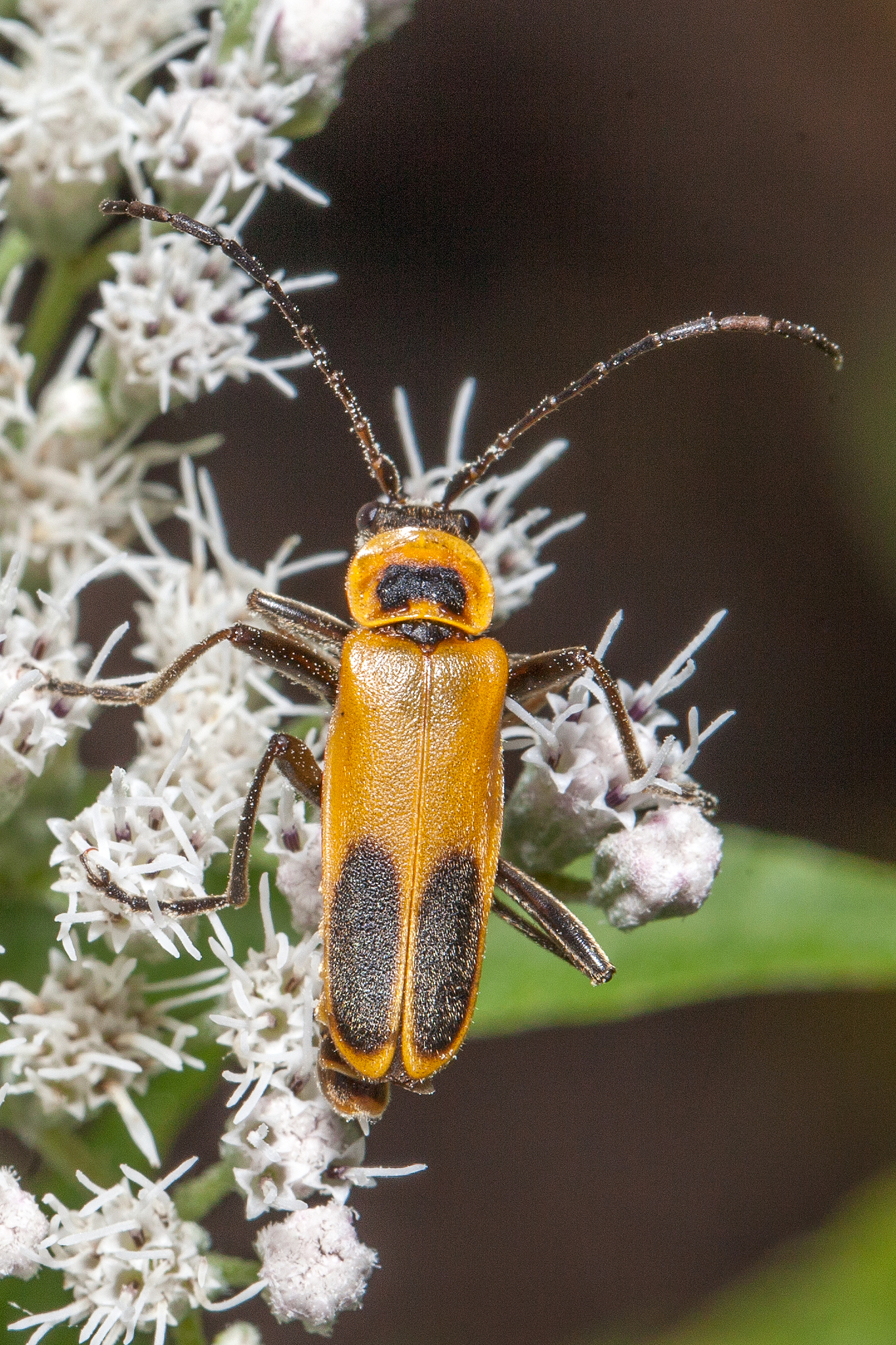Map Snapshot

























614 Records
Seasonality Snapshot
Source: Wikipedia
| Goldenrod soldier beetle | |
|---|---|

| |
| Scientific classification | |
| Domain: | Eukaryota |
| Kingdom: | Animalia |
| Phylum: | Arthropoda |
| Class: | Insecta |
| Order: | Coleoptera |
| Family: | Cantharidae |
| Genus: | Chauliognathus |
| Species: | C. pensylvanicus
|
| Binomial name | |
| Chauliognathus pensylvanicus (DeGeer, 1774)
| |
| Synonyms | |
| |
The goldenrod soldier beetle[1] or Pennsylvania leatherwing[2] (Chauliognathus pensylvanicus) is a species of soldier beetle (Cantharidae).
Nomenclature
[edit]The specific epithet pensylvanicus is Latin for "of Pennsylvania". The spelling with one n was in common use at the time (de Geer says in the description that the specimen was sent to him from 'Pensylvanie'), so the species name based on it cannot be corrected under the rules governing scientific names.[1]
Distribution
[edit]The species is native to North America, and is one of the most common species of soldier beetle in the Midwest.[3]
Ecology
[edit]C. pensylvanicus has been identified as an important pollinator of the prairie onion.[4] Adults of the species are active in late summer and early fall. The beetle prefers yellow flowers. [5]
Parasites
[edit]Adult C. pensylvanicus may be infected by the fungus Eryniopsis lampyridarum. After the fungus infects the host, it takes about two weeks for it to eventually kill its host. Before the host dies, the fungus orders the beetle to climb a plant and then attach itself to a flower by biting down with its mandibles into flower heads.[6] About 15–22 hours later, the fungus causes the dead beetles to raise their elytra and expand their metathoracic wings in order to maximise infection of other beetles.[7] With their wings raised, the dead beetles may still attract mates as live males were observed mating with the deceased, infected females, this then transmits spores from one insect-host to another.[8]
Gallery
[edit]-
goldenrod soldier beetles foraging on yellow ironweed
-
Mating goldenrod soldier beetles mating on yellow ironweed
-
goldenrod soldier beetles taking flight from yellow ironweed, followed by slow motion (taken at 3,840 frames per second
References
[edit]- ^ a b "Species Chauliognathus pensylvanicus - Goldenrod Soldier Beetle". bugguide.net. Retrieved 2022-09-19.
- ^ Pennsylvania Leatherwing Beetle - (Chauliognathus pennsylvanicus), insectidentification.org
- ^ "Goldenrod Soldier Beetle, Chauliognathus pennsylvanicus". Master Gardener Program. Retrieved 2019-07-24.
- ^ Weiherer, Daniel S.; Eckardt, Kayla; Bernhardt, Peter (2020-09-11). "Comparative floral ecology and breeding systems between sympatric populations of Nothoscordum bivalve and Allium stellatum (Amaryllidaceae)". Journal of Pollination Ecology. 26. doi:10.26786/1920-7603(2020)585. ISSN 1920-7603.
- ^ Catron, Katlyn A; Hennen, Derek A; Wagner, Jennie F; Brown, Bryan L; Weber, Donald C; Kuhar, Thomas P (11 July 2023). "Analysis of host plant availability and use by 2 species of soldier beetles (Coleoptera: Cantharidae) using community-gathered digital specimens". Annals of the Entomological Society of America. 116 (5): 305–313. doi:10.1093/aesa/saad016.
- ^ Geggel, Laura (15 June 2017). "Photos: Zombie Beetles Hang from Flowers". livescience.com. Retrieved 31 December 2022.
- ^ Steinkrausa, Donald C.; Hajekb, Ann E.; Liebherrb, Jim K. (2017). "Zombie soldier beetles: Epizootics in the goldenrod soldier beetle, Chauliognathus pensylvanicus (Coleoptera: Cantharidae) caused by Eryniopsis lampyridarum (Entomophthoromycotina: Entomophthoraceae)". Journal of Invertebrate Pathology. 148: 51–59. doi:10.1016/j.jip.2017.05.002. PMID 28535871.
- ^ Malhotra, Richa (9 June 2017). "Fungus creates zombie beetles that crave flowers before death". New Scientist. Retrieved 10 June 2017.
External links
[edit]- Soldier Beetles. Family Cantharidae, Canadian Bioversity







